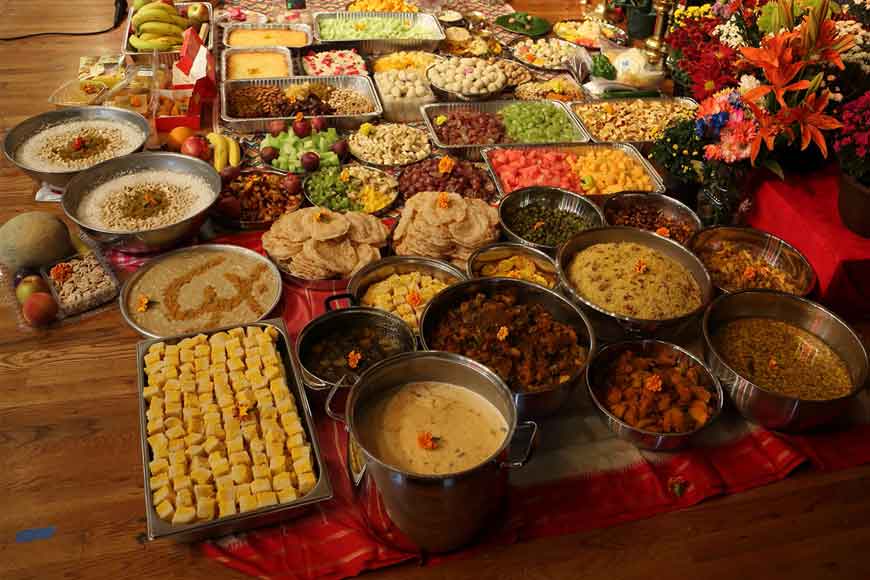600-year-old Durga puja that starts with Muslims offering bhog to Maa Durga - GetBengal story

Bhog, offered during Kodakhaki Durga Puja, Raghunathgunj, Murshidabad
The beauty of Bengal is that its festivals bring people together. The rituals and religions might be different but our culture binds us to each other. For decades it has been known that be it Eid, Durga Puja or Christmas, Bengal lights up in each and every festival and celebrates each with a feeling of oneness. Durga puja is the city’s very charm and people belonging to different faiths and practices join the pujo fervour. The corners of Bengal hold memories of many old Durga pujas. And not only memories, many old practices have also been continued for ages. One such age-old Durga puja is the famous “Kodakhaki Durga puja”. The pujo is famous as it takes place in a Muslim majority area and the fact that adds more significance to it is that the supplies of puja are brought from a Muslim family.
The Kodakhaki puja takes place in Bahura village of Lakshmi Janardanpur, Raghunathgunj, Murshidabad. It is believed that every year just the day before Bodhon, any one Muslim family of the locality gets an order in their dream from the deity herself, the deity mentions who will donate what and when. They have retained the same offerings, rituals and traditions for over 600 years now. The first “bhog” or food that is offered to the deity comes from one of the Muslim households, after which people from other families can offer their food.
The name of the puja is rather odd, stories that are heard indicate that centuries ago, a horrifying flood had hit the village and as a result all the rice fields were under water. The crops were also destroyed. Then, during the pujas, a member of a Muslim family was ordered by the deity to offer kaun rice along with drumstick, jackfruit and fresh ilish from the Ganga river. Earlier, the “kaun” rice was known as “Koda”, hence the puja is called “Kodakhaki Durga” or koda rice eating Durga, the deity is often also called “Ma Kodakhaki.” This Pujo was started by the Banerjee family who lived in Monigram, Sagardighi.
From there, Sarat Chandra Banerjee came to Bahura, he was a Zamindar in the Jyotkamal area. The dacoits used to worship Maa Durga in a forest. One day as Sarat Chandra was on his way back from work, he witnessed the puja with his own eyes. The next day, Ma Durga arrived in his dreams and asked him to worship her at his residence. After that, he established the deity at this residence and started worshipping her. Locals believe Ma Durga once again appeared in his dreams and asked the first offerings to be given by a Muslim family. A Muslim widow called “Lokar ma” used to live in Bahura village. The zamindar family requested the woman to offer food to the deity. The poor woman could not feed herself, it was impossible for her to offer food to the deity. The next day, Ma Durga appeared in her dreams after which she went into the jungle, collected some Koda rice and made “narus” or balls of it and offered it to the deity.
For centuries, this practice has continued, even today the deity is offered Koda’s narus as offerings. Like the other pujas, here, Arati and Pushpanjali are not offered. People from all religions can participate in this puja. Muslim women decorate the hands of the figure with the sacred bangles, ‘shakha’ and ‘pala’ that Bengali married women often wear. A goat is sacrificed as a ritual. Such unique pujas are examples of how the beauty of Bengal is enhanced with the diversity in culture. Durga puja has remained a symbol of harmony for everyone in the city. People coming together during the puja, keeps the essence of it still alive.










